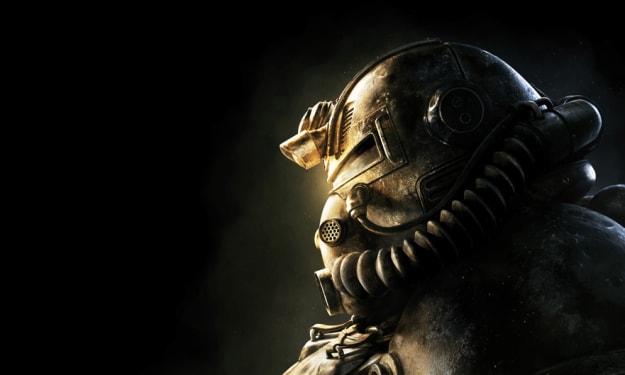REVIEW: Glyph
Last summer, while I was still in quarantine, I found myself engrossed in Netflix's Floor is Lava

Last summer, while I was still in quarantine, I found myself engrossed in Netflix's Floor is Lava. It challenged its viewers to recreate a childhood ritual that is so common it appears to have been ingrained into their DNA. The sets were created to portray the title game in child's mind. Sofas and ottomans floated on a lake of red liquid, while contestants moved from vine-like drapes to safety.
This may explain why I felt a sense of familiarity when Glyph was launched on my Switch by Bolverk Games, a unique 3D platformer. It taps into that primal urge to keep one’s feet above the ground and amplifies that simple idea to amazing heights.
Glyph is a robotic scarab that lives in a ball shape and can be controlled by players. Players must jump from one platform to the next to explore this post-apocalyptic wilderness. Glyph can stand on cracked pillars or stone slabs, but if it touches the sand below, Glyph will be cybernetic toast and return to the beginning of each level.
Bolverk is able to make good use of the basic elements of the game, both visually and mechanically. Bolverk's simplified approach is a good one, as it allows for a quick-paced game with very little distraction. It is not revolutionary, but it is enjoyable.
Glyph's protagonist is a familiar shape, and has been compared to Sega's Monkey Ball series. However, these comparisons are not warranted. The cast of simians that are confined to spheres are merely vessels for the player to protect and are subject to the physics of tilting platforms. However, the former allows the player much greater freedom of movement. Samus' morphball is a better analog but it doesn't do justice Glyphs hypermobility.
Glyph is based on the core mechanics of jumps, double jumps and downslides. It reminds me of the acrobatic jump sequences that Cappy could perform in Super Mario Odyssey. These mechanics are gradually introduced over a 15 to 20 minute tutorial, before the player can start exploring the rest of the levels. The time trials, which are basically mini speedruns to exit, are 30 and the rest are for exploration. These stages require you to collect keys to unlock the exit portal. This can be a quick task that takes only a few minutes if you are in a hurry. You'll spend a lot more time looking for collectibles in their nooks.
To progress to the later stages of the game, you will need to find the easier-to-find items like gems and coins. These are initially not accessible in 's hub universe: the ancient ruins at Aaru. There, Anobi, a single robotic beetle, hopes to restore his home's former glory. You'll need to put extra effort if you're a perfectionist like me, to find the best combination of aerial maneuvers to reach better-hidden treasures. Each level also contains a gold token which will allow you to access time trials. Additionally, each level has an unlockable cosmetic (called "avatar") that is well worth the effort. There's a pink Jack'o'lantern, a bedsheet ghost, a cyberpunk dragonfly and a spooky Lovecraftian mollusk. Glyphoffers a lot of replayability and content if you are patient enough to learn it.
Despite the wide range of cosmetics that you can unlock, the game's environment will feel the same throughout your 110-level campaign. Glyph's comic-book colors and smooth surfaces are great for the eyes but they fail to fully immerse you in the Bolverk story. Anobi, your sidekick, gives some context to the chaotic collection of rocks and pillars that is Aaru's past at random points during each stage. However, the story doesn't have enough to meld game and lore until you get to the later stages. I would be open to allowing more imagination, especially when the joy of solving a difficult puzzle that makes Glyphcompelling is what keeps me going.
These empty spaces are almost hypnotic, however. Glyph's metal footsteps against the stone and the sound of the synth drones making up the game's soundtrack are both my favorite sounds. It's easy for you to spend a few hours exploring Aaru and not realize how long it's been. I wish there was a larger hub world that I could explore without worrying about progress or time. It would be a great way to relax and bounce between buildings, just like in Spider-Man games.
It's the simplicity of Glyph that keeps it fresh. Piloting the insectoid protagonist feels like learning to play with a toy (and it does kind of resemble a Bakugan, come to think of it). Even if you fail to land a jump every time, the feeling of accomplishment on the other end makes it worth the effort. You might find that the double jump to glide sequence is as natural as jumping from a sofa to a recliner.





Comments
There are no comments for this story
Be the first to respond and start the conversation.